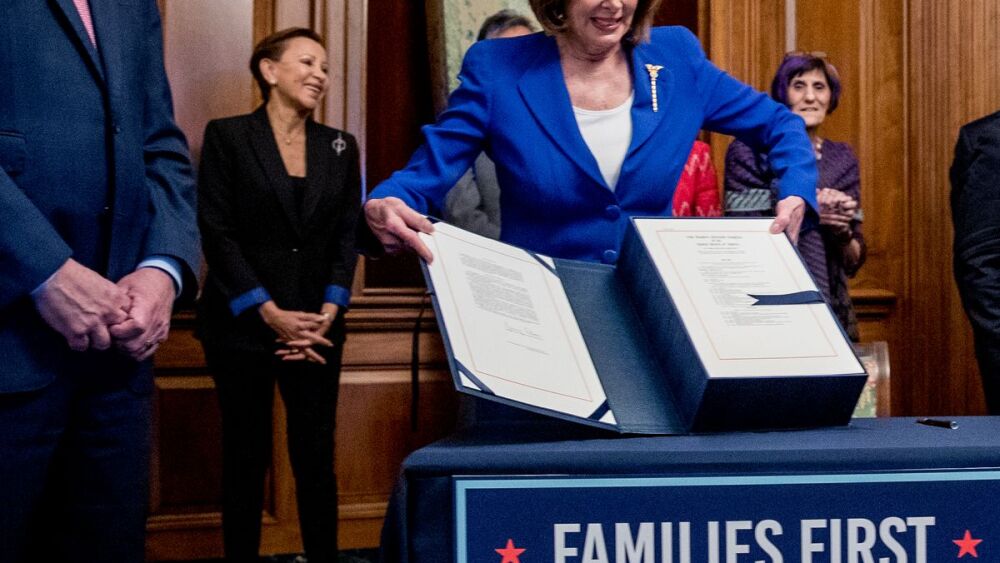By Steve Wirth, Esq., EMT-P
Times are really tough – operationally and financially. Many ambulance services were on life support and barely making it from one payroll to the next before the coronavirus turned into a National Health Emergency. And now the struggles are truly at a critical point for many services, as non-emergency ambulance transports have decreased significantly – as much as 50% in some areas – due to cuts in elective hospital procedures, the freeing up of hospital beds for the anticipated onslaught of COVID-19 patients, and the public’s new fear of going to a hospital that this crisis has impacted.
These big decreases in call volume – and the equally large reductions in revenue – are hitting ambulance services particularly hard as they also incur many new costs for equipment, PPE, overtime, cleaning and other unbudgeted expenses necessary to respond to COVID-19 patients. But some tremendous help from the federal government has just arrived on the scene – and ambulance services should consider taking advantage of it – now!
The Payroll Protection Plan to the rescue
The $2 trillion Coronavirus Aid, Relief, and Economic Security Act (“CARES Act”), signed into law on Mar. 27, 2020, introduces a new federal loan program that can provide a critical infusion of cash into the arteries of ambulance services to help keep the blood flowing – keeping staff employed and covering the payroll during the next few months. The Paycheck Protection Program (PPP) has $349 billion in funding to help prevent small businesses – including many eligible ambulance services – from failing due to losses caused by the COVID-19 pandemic.
The best part of the program is the loans can be forgiven in most cases (for practical purposes converting this loan program into a grant program) so long as the funds are used to cover payroll and a few other essential costs.
Who is eligible for the Payroll Protection Plan?
Most ambulance services – either private for-profit companies or non-profit 501(c)(3) organizations – that employ not more than 500 employees, including tribal ambulance services, are eligible. Combination career/volunteer ambulance services would also be eligible as they incur payroll costs. Government-operated ambulance services are not eligible for the program.
How much can be borrowed under the Payroll Protection Plan?
The maximum amount available to borrow for each ambulance service is 2.5 times its average total monthly payroll costs, not to exceed $10 million (compensation paid to an employee in excess of $100,000 annually may not be used in the calculation).
- Small Service Example. No employees make more than $100,000
- Annual payroll: $120,000
- Average monthly payroll: $10,000
- Multiply by 2.5 = $25,000
- Maximum loan amount is $25,000
- Mid-sized Service Example. Some employees make more than $100,000
- Annual payroll: $1,500,000
- After subtracting out salaries in excess of $100,000: $1,200,000
- Average monthly qualifying payroll: $100,000
- Multiply by 2.5 = $250,000
- Maximum loan amount is $250,000
What can the Payroll Protection Plan loan be used for?
The loans may be used for the following expenses from Feb. 15, 2020 through June 30, 2020:
- Payroll costs
- Costs related to the continuation of group healthcare benefits during periods of paid sick, medical or family leave, and insurance premiums
- Employee compensation
- Mortgage interest obligations (but not principal)
- Rent and utilities
- Interest on debt incurred prior to the loan
- Refinancing of certain Small Business Administration (SBA) loans made between Jan. 31, 2020 and Apr. 3, 2020
The Interim Final Rule published Apr. 2, 2020, clarifies that at least 75% of the loan amount must be used for payroll costs.
Can the Payroll Protection Plan loan be forgiven?
Yes. A borrower is eligible for loan forgiveness up to the full amount of the loan and any accrued interest for costs incurred and payments made during the 8-week period after the origination date of the loan, provided proper documentation can be provided on: on:
- Payroll costs
- Mortgage interest on mortgages that had been in place prior to Feb. 15, 2020
- Certain rent costs that had been in place before Feb. 15, 2020, and
- Certain utility costs (electricity, gas, water, transportation, telephone, or internet) that began before Feb. 15, 2020.
However, at least 75% of the forgiven amount must be used for payroll costs. The amount of loan forgiveness may be reduced if there is a reduction in the number of employees or a reduction of greater than 25% in wages paid to employees. This reduction will not apply if the borrower eliminates the reduction in employees or reduction in wages by June 30, 2020.
How do we apply for the Payroll Protection Plan?
Talk to your local bank. Any bank that is eligible to process loans under the federal SBA loan program is generally able to process the application.
Is it easy to apply for the Payroll Protection Plan?
Yes. The application is only four pages and requires just a few attachments. It can be completed in a couple of hours or less in most cases and can be signed electronically.
Other key points about the Payroll Protection Plan
- Get the application in now! The PPP is “first-come, first served” so you must get your application in as soon as possible, as funds will be dispersed quickly and most experts believe the current allocation of nearly 500 billion will not be enough to cover all the loan requests. Thousands of applications were filed on April 3, the first date that applications were accepted.
- No collateral required. No collateral and no personal guarantees are required, which is unlike most other loan programs, and is a big plus of this program.
- Loan Terms. Interest rate is 1% and the maturity is 2 years.
- Borrowers must make certain certifications. Among other certifications, borrowers must certify that the uncertainty of current economic conditions makes necessary the loan request to support ongoing operations and that the funds will be used to retain workers and maintain payroll or make mortgage payments, lease payments, and utility payments.
- Fast Approvals. It should only take a couple of days (or less) to get approval, and the funds should be available to the borrower within days or at most a couple of weeks.
The bottom line is that the Payroll Protection Plan is a unique and unprecedented program that can be a huge lifesaver to help ambulance services get through the financial pain of the next few months as we all fight the battle against the coronavirus. It can help provide needed financial stability, as well as emotional stability to help allay the anxiety that comes with wondering how the next payroll will be made during this time of crisis.
A copy of the Interim Final Rule can be found here.
https://content.sba.gov/sites/default/files/2020-04/PPP--IFRN%20FINAL.pdf
A copy of the loan application form can be found here.
Read next: CARES Act and grant funding: How it will benefit local fire and EMS response
About the author
Steve Wirth is a founding partner of Page, Wolfberg & Wirth, LLC and a highly regarded EMS attorney, author and speaker. He can be reached at swirth@pwwemslaw.com.














